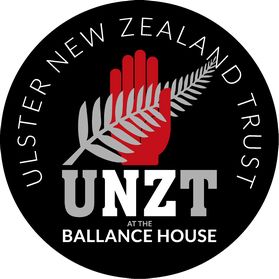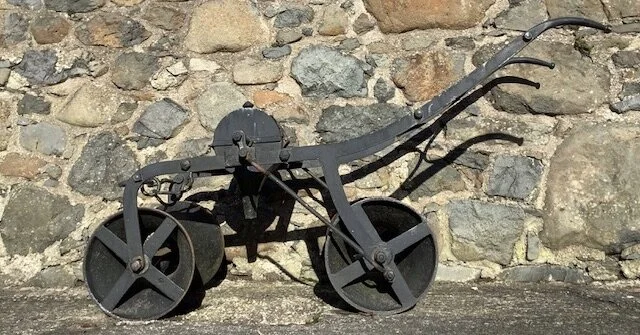Turnip Sower
One Man and his Horse
Fodder crops, such as turnips, traditionally fed to cattle and sheep were always sowed by one man and one horse. It was a skilled job being able to drive the horse along the furrow, the low ground between the drills, while keeping the turnip sower dead centre on top of the drill, the high ground, where the seeds are planted.
Any mistakes would be all too visible when the seeds germinated and valuable output was lost. Never mind enduring the gentle leg pulling by neighbours as the ploughman's lack of skill was visible for weeks or even months afterward.
Made by Messrs Gray & Son of Belfast this turnip sower was gifted to The Ballance House by Redmond Jefferson Ltd, Lisburn. Now part of the J P Corry Group.
The Turnip sower at the ballance house
Competitive Ploughing
That ploughing and sowing were valued skills was reflected in the growing popularity of ploughing matches from the 1850s onwards. A time when progressive landlords and farmers sought to improve agricultural output following the Famine. A natural disaster across much of Europe made worse by over reliance on one crop, the potato, in parts of Ireland.
At the second annual Portglenone Farming Society ploughing match on 7th February 1867 in a field kindly granted by Wm Wallace of The Island some 13 prizes were awarded. All were made and graciously presented by Messrs Gray & Son, the respected Belfast manufacturer. First prize was, of course, a plough, but second prize was a turnip sower awarded to John Hilton. No doubt very similar to this one at The Ballance House. A most interesting historic summary of this actual ploughing match can be found here.
Modern Cultivation in NI and NZ
Nowadays cultivation techniques have moved on with satellite technology on tractors and self-propelled machines ensuring every square metre of land is treated equally. No longer can the neighbours enjoy pointing out where a sower moved off the centre of the drill for several feet!
Fodder crops are still grown in NI most frequently for sheep. Often being strip grazed in the field behind an electric fence that is moved every day or two to give lambs access to fresh turnips or fodder beet. Generally the electric fences are made by Gallagher of New Zealand.
A global leader in electric fencing for livestock this famed firm was founded by the late Sir William Gallagher, a dairy farmer from Hamilton on North Island, NZ.
For further reading:
Goldsmith, Paul (2013). Legend: From Electric Fences to Global Success: The Sir William Gallagher Story. Penguin Books New Zealand. ISBN 978-1-77553-337-5.
Freams, Elements of Agriculture, Douglas H. Robinson. Published by John Murray








